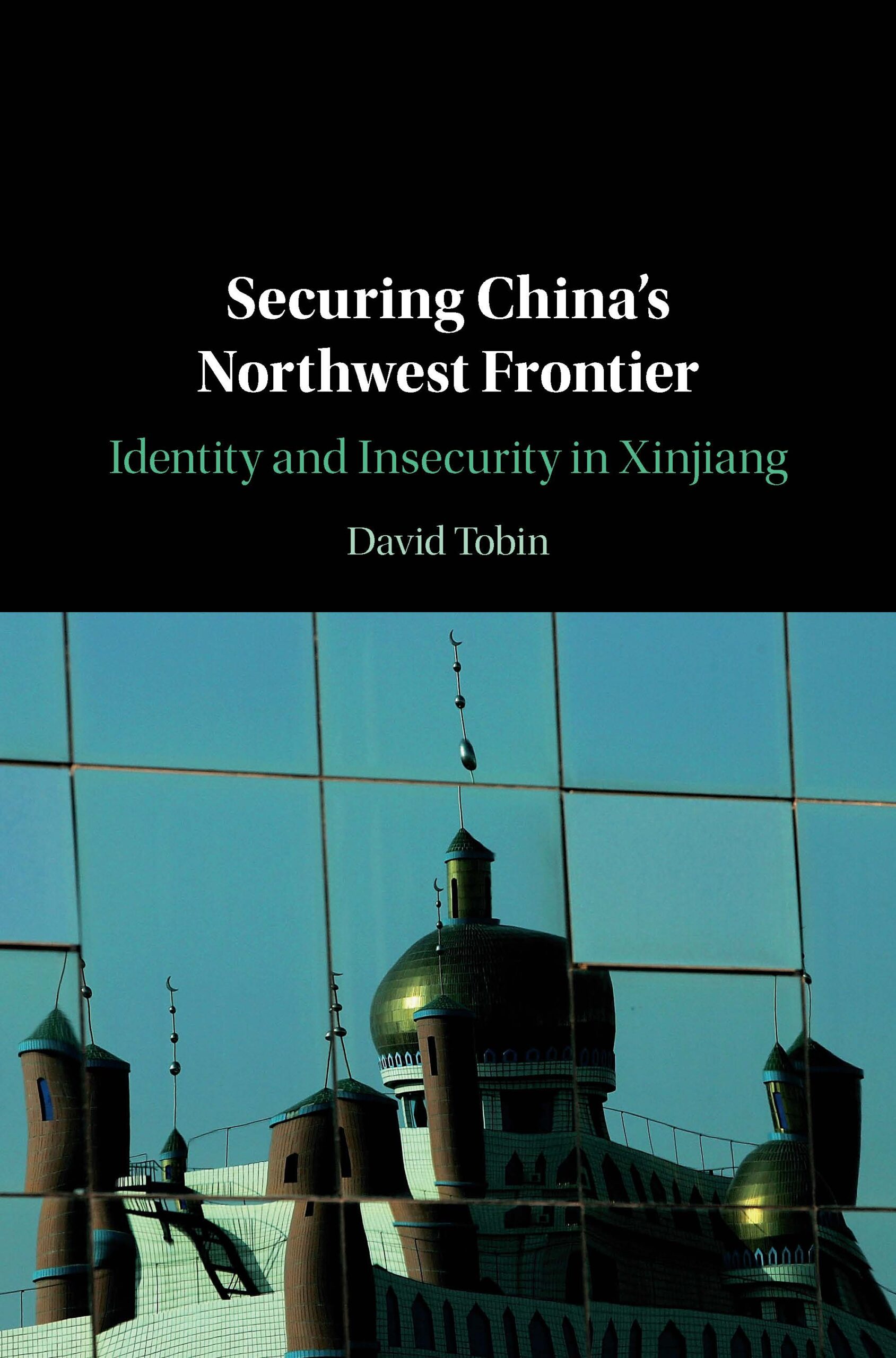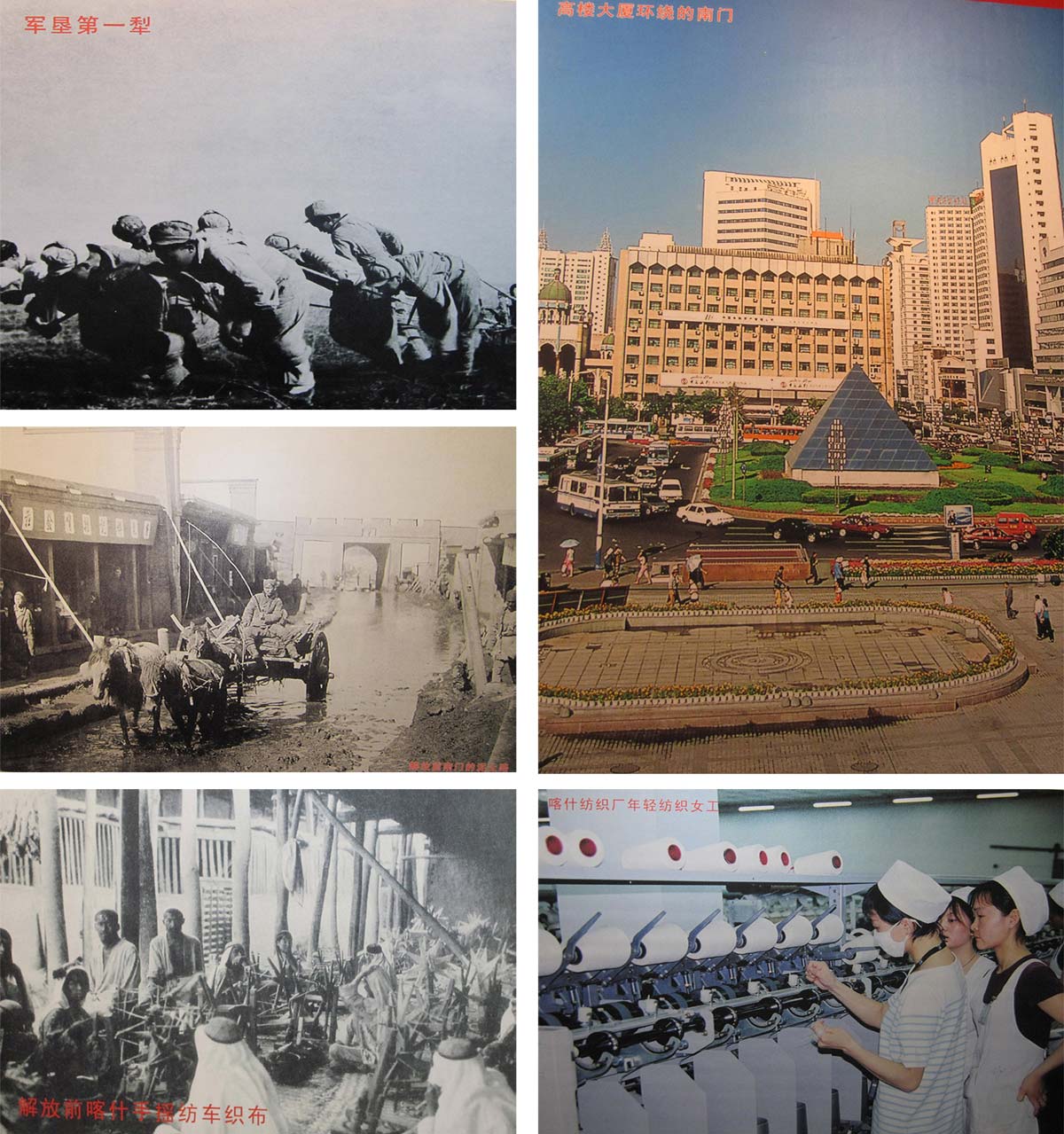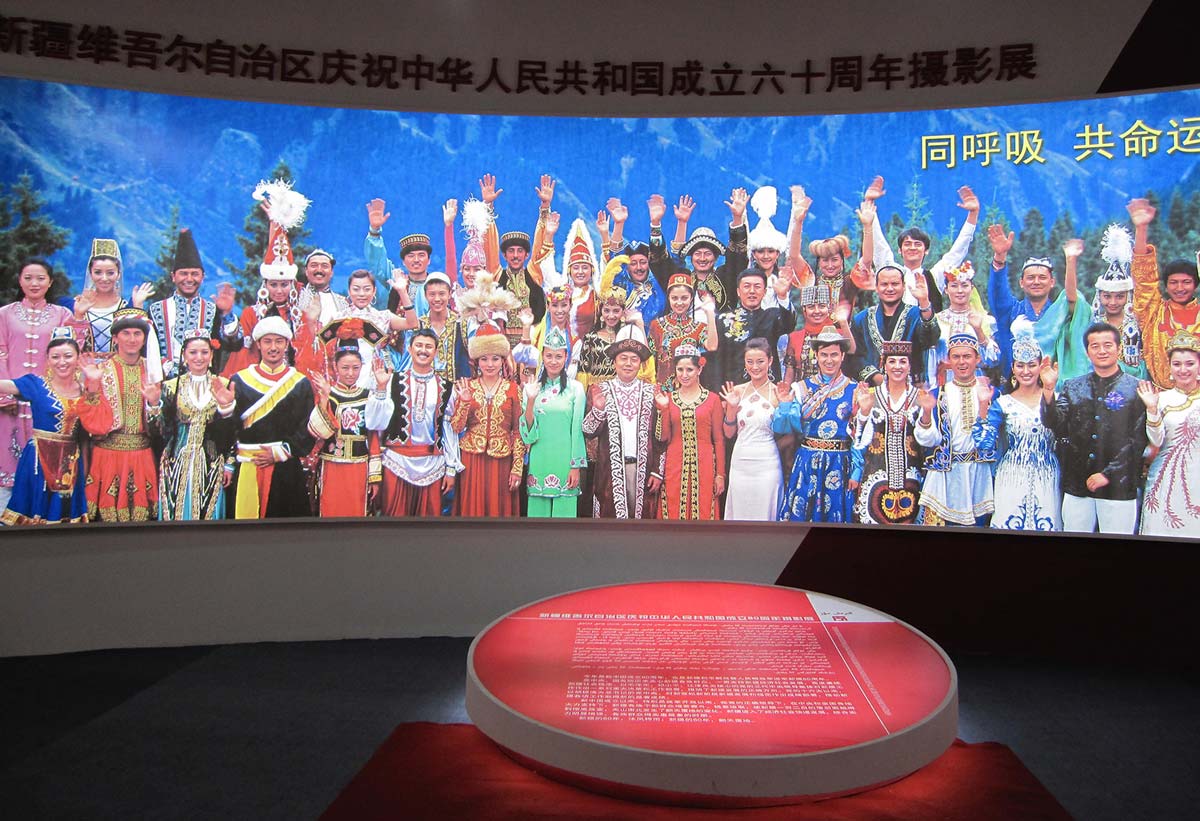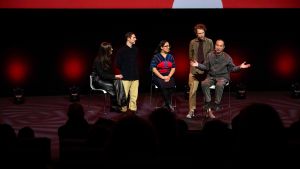
Securing China’s Northwest Frontier: A Conversation with David Tobin
Over the past two decades, a rhetoric of terrorism has been used to conflate the criminal actions of a relatively small number of people with the religious and cultural practices of more than 12 million Uyghurs who call the southern part of the Uyghur Autonomous Region (Xinjiang) their ancestral home. This has had a dramatic effect on the ways ethnicity and religion have been lived and controlled through policing, educational programs, and political policy in the region—resulting since 2017 in the mass internment of hundreds of thousands of Uyghurs and others who were deemed ‘untrustworthy’ (不放心). In Securing China’s Northwest Frontier: Identity and Insecurity in Xinjiang (Cambridge University Press, 2020), political theorist and ethnographer David Tobin examines, among other things, the effects of terrorism rhetoric, policy changes related to ethnicity, the role of class, and urbanisation on Han and Uyghur self-perception. His work is grounded in the context of post-2009 Ürümchi, where he lived and worked for two years.

Darren Byler: Much of the fieldwork for your book was conducted immediately after the violence of 5 and 7 July 2009. Can you explain how the rhetoric of terrorism was used to describe the violence that occurred? Who and what was labelled terrorist? And how was an antiterrorism response enacted?
David Tobin: The case of how contemporary representations of Uyghurs as terrorists and longer-term national identity discourse intersect illustrates how dominant national narratives overlap and interweave, rather than simply replacing each other in new ‘phases’ of history. Confucianism (5,000 years of unbroken civilisation), historical materialism (revolutionary progress), and ethnonationalism (Han chauvinism) are competing national narratives, defining China’s identity and history on different terms (civilisation, socialism, and ethnic nationalism). However, in practice, they work together by consistently framing non-Han ethnic identities as problems or potential threats to be overcome with Chinese identity (中华民族). The shift from framing Uyghurs as ‘barbarians’ to ‘backward’, and ‘ethnic minorities’ to threatening ‘terrorists’, is not chronological or total and the same people interviewed, both in leading political positions and working in precarious occupations, often used all three logics in the same narratives of identity and security. Framing Uyghurs as terrorists maps quickly on to older narratives of barbarians and cultural difference, with alternative national histories and protest becoming rapidly framed as ‘terrorist’ threats to China’s national identity and state power.
The Chinese Communist Party enacts socialism as performative politics to distinguish itself from the West and capitalism. However, its nation-building narratives and practices in Xinjiang were in many ways as ethnocentric as those of European colonial state-builders who assumed their own values to be culturally neutral. The Party-State’s notion of teleological progress always leads to an inevitable future of Chinese identity and the ‘disappearance’ of minority identities. Many European and North American socialists are oblivious to these dynamics because they rely on Marx as performative opposition in their own societies—what Derrida termed the ‘spectres of Marx’. The Party-State replicates the ethnocentrism of Marx and Engels’ historical materialism that John Hobson critiques as Eurocentric and that, as Cedric Robinson shows, conceals how racism and racialised economic organisation have always shaped global economic development.
Reading official narratives and interviewing Han and Uyghurs about their conceptualisation of identity and security during my 2009 fieldwork taught me that signifiers (for instance, ‘terrorism’) and the signified (such as violence, difference) lead separate but interconnected lives. The official language that framed the July 2009 violence (‘evil’, ‘scum of the nation’, ‘life or death struggle’, etc.) enables and constrains how people think about and act on these phenomena. However, like current atheoretical discussions of genocide, the terminology does not radically transform the immediate reality of those phenomena and we must address the same underlying theoretical, empirical, and ethical questions. Why do people feel the need to categorise each other and what are the effects of doing so? Why are some groups identified as threats and how do they respond? What material and ideational conditions make people insecure and more likely to turn to violence?
Global public discussion on state violence in Xinjiang has grown since the emergence of mass internment camps but the terms of debate are often narrowed, and people are expected, first, to respond to official framings (‘reeducation’, ‘terrorism’, rescuing ‘baby-making machines’, etc.) that end debate and promote ethnocentric and Orientalist understandings of China. Second, scholars who publicly engage are pushed into choosing between non–mutually exclusive, politically constructed signifiers (‘counterterrorism’ or ‘reeducation’ or ‘modernisation’ or ‘genocide’). All of these things are happening at once and focusing on these terms by themselves shapes and limits knowledge of identity dynamics and marginalised voices that cannot be reduced to single signifiers. Many of the recent terminological debates’ indifference to Uyghur and other Indigenous perspectives remind them they are alone and reflect what Yi Xiaocuo termed ‘perpetual silence’. One diaspora interviewee who has publicly campaigned to speak with separated family members explained to me with tears in their eyes: ‘While the world debates a f***ing word, we are dying.’
In my work, I address the underlying lens through which the Party-State understands violence. It is deeply misleading to analyse violence and identity using billiard-ball causality or by quoting official explanations without consideration of meaning and effects in social context. The 2009 period was described as a ‘turning point’ in official narratives regarding its analysis of the ‘ethnic problem’ and policy solutions. However, the region has been formally described as a peripheral ‘frontier’ to be secured since 1884, the ‘ethnic problem’ has framed all policy construction and the need to secure the region since 1949, and the violence in Baren Township in 1990 was described in similar terms (‘a wake-up call’). ‘Terrorism’ and ‘extremism’ were not used as explanatory devices in policy documents or public narratives prior to 9/11. These terms were adopted in late 2001 to delegitimise widespread Uyghur discontent and maintain the framing of their identities as threats under new material conditions. The street-level tactics of the People’s Liberation Army (PLA), People’s Armed Police (PAP), and Special Weapons and Tactics (SWAT) police during 2009 involved clustered troop deployments, displays of military hardware and troop numbers, and mass policing of all public roads. These crowd-control tactics and displays of state power are generally used because, if troops are facing improvised explosive devices or paramilitary groups, clustering together in such large, stationary deployments would put troops in great danger. It was self-evident that these were crowd-control tactics and displays of state power, deployed to stop population movement, not fight armed organisations.

The Party-State securitises China by placing its identity beyond politics, and opposition to these identity narratives is considered terrorism. The violence by Han workers against Uyghurs at the Shaoguan factory—which at that time was acknowledged by organisations such as China Labour Watch to use coerced labour—was described in official texts as an ‘ordinary public order incident’ (典型的社会治安案件) and that only the ‘Three Evils’ (三股势力) (terrorists, separatists, and extremists) could think otherwise. This state inaction sparked the July 2009 violence. Violence by Uyghurs was subsequently described as a ‘life or death struggle’ (你死我活的政治斗争) for China’s survival while Party-State leaders offered gratitude to Han rioters (‘Thank you, comrades’) for their violence against Uyghurs. Universal ethnic unity education texts from this period, including the 50 Whys (50个为什么), describe identifying as Uyghur as an act of terrorism: ‘only the Three Evils’ challenge the Party-State’s narrative that Uyghurs are ‘not a Turkic group’ or ‘not an Islamic group’.
One could observe how Han residential areas were lightly policed while Uyghur-populated areas saw constant flashing CCTV surveillance, PLA and PAP armed patrols, marches of armed, untrained Han volunteers, and stop-and-search of non-Han in all public buildings and public transport. Living in a Han-majority area, Han could freely come and go from residential compounds, but all non-Han were questioned by security guards and had to provide ID cards if visiting. One narrative in the official ethnic unity education texts was that a small number of extremists had mobilised ‘ignorant’ students and controlled their minds (控制思想). This is the same logic that explains mass internment camps today, where 30 per cent of the population are considered ‘extremists’ and 70 per cent are ‘vulnerable to extremism’. Ultimately, this dehumanises every non-Han as a potential threat to China’s identity. The fear of these threats can be activated at any time to justify mass violence because Uyghurs are seen as superfluous to China’s teleological progress.
DB: One of the key ideas that emerges from your analysis of post-2009 Xinjiang vocational college and junior high school textbooks are discussions of ‘ethnic extinction’ (民族消亡). Who is ‘ethnic’ in this framework? Is this used as a justification for the dispossession of place-based modes of minoritised autonomous social life? Was ‘extinction’ understood to be an intentional project post 2009 or an inevitable outcome of Chinese state power and economic development?
DT: The first discussion of the ‘ethnic extinction’ concept I encountered in my research was from the early 1950s writings on how to construct ethnic policy in the context of China’s ancient history and contemporary state-building. Social anthropologist Jian Bozan warned that newly fashionable accounts of unbroken civilisation were ahistorical and would conceal China’s long history of class conflict and ethnic oppression, leading it on a similar path to the West by using violent assimilation to deal with the ‘ethnic problem’. He distinguishes ‘natural’ assimilation through interaction (同化) from planned social engineering (消亡, xiaowang)—terms that were revisited in the 2012 intergenerational ethnic policy debates about how to assimilate non-Han: economic development or planned identity engineering.
The xiaowang concept fell out of favour after the Cultural Revolution, being associated with cultural destruction and the genocidal notion that ‘only if there are minzu (民族, ethnicities), can there be a minzu problem’. Its unannounced return in high school textbooks at least since 2009 appeared alongside colonial narratives that language and ethnic disappearance are natural outcomes of ‘modernisation’ and how the Chinese nation is formed through ‘complementary development’ (经济互补) between the ‘frontier-building culture’ (屯垦文化) of the ‘advanced central plains’ and passive minorities on the ‘backward frontier’. In xiaowang narratives, Han identity was formed during the Qin–Han period and has the capacity to absorb and attract other groups, much like older chauvinist narratives of Han identity. The Han are a ‘transcendent group’ (超越民族), in the same way John Locke described the arrival of Christians in North America as offering universal progress or salvation. This culturally blind perspective alongside ethnocentric modernisation narratives again parallels Locke’s dismissal of ‘indolent Indians’ and superimposes ethnonationalism on to a historical materialist framework of progress.
When I speak to non-China specialists, many see this cultural blindness alongside notions of culturally neutral progress as neoliberal. However, these narratives have a much longer history and are semantically hybrid combinations of Chinese and European thought and of culturalism, nationalism, and socialism. ‘Extinction’ is known to be a planned state project, but that project is designed to present itself as culturally neutral, materially inevitable, and beyond reproach. The word xiaowang is not hugely significant in itself but the audience’s knowledge of its meaning and its relationship with genocidal practices—from language elimination to repression of religious practices—has serious and widespread displacing effects. The very idea of ‘Xinjiang’ itself—a new frontier on the periphery of China’s civilisation—displaces Uyghur identity by uprooting their attachments to land and place as the centre to their identity, not a periphery. The 50 Whys listed ‘having too many intra-oasis contacts’ or ‘holding intra-oasis parties’ as a sign of terrorism, so people’s attachment to place is seen as a proxy for Uyghur nationalism and a threat.

DB: How did class difference shape self-identity among Xinjiang Han? Did both migrant and resident Han groups appear to believe that the state supported their presence in Xinjiang? For instance, did low-income Han migrants in Ürümchi have a different relationship to the state than, for example, migrants to Shenzhen or Beijing who often see the state as their enemy? Did you see any variation in how different groups viewed Uyghurs—for instance, those who identified as ‘local’ Xinjiang people versus those who came as part of the Open Up the West campaign in the 1990s and 2000s?
DT: I avoided mapping class in Xinjiang on to generalised models and use the category loosely, referring mainly to income bracket and occupation, which do not necessarily entail self-identification or class consciousness. The feelings among working-class Han in Xinjiang that the state does not represent their interests, or socialism in general, parallel those that can be found elsewhere in China. This has not resulted in widespread solidarity with Uyghurs, however, who are nevertheless generally described as a threat to their nation using Party-State narratives. Working-class Han I interviewed tended to be critical not only of how the Party-State promoted economic inequality in its focus on large-scale infrastructure and development projects, but also of how it was too tolerant of Uyghur identity by failing to protect Han with state violence. When I explicitly asked working-class Han about solidarity with Uyghurs and other non-Han groups, this was generally dismissed, and people would laugh at the thought. Some interviewees grasped the significance of the question and would explain why it cannot work, including one person stating: ‘What foreigners don’t understand about China is that it’s not socialist! It’s a capitalist-communist country. We don’t even know who rules us!’
In some senses, the role of ‘the Uyghur’ in this context parallels how the threat of ‘the West’ closes human connections and blocks interaction between Han and the world, most recently crystallised in ‘white left’ narratives (though these are just new iterations of the same power relations). Like in other regions of China and indeed other nations, Han middle classes in Xinjiang refer to working classes as ‘vulgar’ and ‘narrow-minded’, seeing themselves as bearers of China’s civilisation and diversity. Most Han narratives of their lives in Xinjiang begin with stories about parents arriving to ‘open the frontier’ (historical materialism) or maintain China’s civilisational continuity (Confucianism) or simply that ‘this is ours’ (ethnonationalism), and map on to the three narratives of Chinese-ness, which include multiple ways of being Han but none of being Uyghur. This diversity enables the working classes to oppose the state and maintain their individual autonomy but results in reinforcing state power and silencing non-Han. In general, the Han working classes identified with ethnonationalism and socialism while the middle classes identified with civilisationism, positioning each other as un-Chinese, partly related to their attitudes towards Uyghurs as inconvertible threats or as backward but essential components of China’s civilisation. When I discuss this class divide as a constructed binary or refer to alternative voices among the working class who felt policy was ethnocentric, Han friends tell me that racism is far more ingrained and widespread than I imagine.

DB: Some of my Uyghur interviewees from southern Xinjiang report that, as they were growing up, they rarely heard discussions of East Turkestan. Even their Uyghur-ness was rarely a topic of discussion since it was simply what everyone was in their community. How have urbanisation, Uyghur labour migration, and securitisation shaped Uyghur self-perception and desires for greater autonomy or self-determination? As you were conducting your fieldwork, did you get the sense that most Uyghurs wanted an independent nation-state or were most primarily interested in more pragmatic short-term solutions to the issues that confronted them?
DT: People tend to problematise and discuss the significance of their identity when it matters. Every Uyghur I interviewed ‘hated politics’ but they all had to comprehend and mediate it when they lived their life. They chose to discuss politics because it affected their life and their identity. My thinking on ethnicity was shaped by Rogers Brubaker, who focused on when, how, and why groupness is politically activated, because nationalism is best understood anthropologically rather than ideologically. It is always there and always changing and always informs our politics but only becomes activated as a focus for collective action under certain conditions. As scholars in this area, we have to be constantly and consistently attentive to the power relations in narrating the authenticity and inauthenticity of identity because Uyghurs are dismissed as ‘colonial manipulations’ while the Han have unbroken history—a binary that Daniel Feierstein identifies as one of the key drivers of genocide.
One thing we can all do is remember that activation of group identity in political action is not causation of that identity itself. Laura Newby very effectively showed how nineteenth-century inter-oasis contacts were extensive and group identity strong among Uyghurs even if they did not use the ideology of nationalism to explain daily life or organise collective action. Justin Rudelson’s argument that oasis identities were more significant than national identity among Uyghurs is partially (and unfairly) quoted in Party-State textbooks as evidence of Uyghurs’ inauthenticity but there is nothing in principle about local identity that precludes national identity. Many Uyghurs love to reflexively laugh at their own inter-oasis rivalries and stereotypes in jokes that reproduce and mock their own attitudes because these highlight differences among Uyghurs without taking them too seriously.
I think the complex dynamics that interlink local and national identities and interweave public action and private self-identification are obvious when ‘inside’ a group, as you are privy to private thoughts and quiet reactions. But for outsiders, violence and nationalism often inexplicably seem to appear from nowhere. Urbanisation, migration, and securitisation do deeply shape both Uyghur and Han self-perception, but it is a categorical error to assume incidents of violence they spark can be taken as simple proxies for identity or to think that national narratives are caused by these processes. Thinking the Chinese nation was caused by imperial encounters with Europe is widely dismissed as Eurocentrism in China Studies because it deprives Chinese people of agency, rendering them passive and reactive, while ignoring their own historical narratives. Replacing this Eurocentrism with Sinocentrism has meant scholars who write about Xinjiang now must apply these logics to groups whose identities are marginalised, and now invisibilised, by narratives that frame Sinocentrism as progress.
In the original conclusion of my book, I included numerous policy recommendations that Uyghurs suggested would bring peace, particularly reinstating Uyghur language in the reeducation system, effectively outlawing employment discrimination, and using funds from natural resource extraction to boost employment. However, those modest policy improvements are now unthinkable and arguing for their implementation is considered terrorism, as outlined in the 50 Whys and in subsequent ‘anti-radicalisation’ textbooks. In my fieldwork, Uyghurs had zero expectations of independence and any conversations addressing it involved discussion of its impossibility, due to both China’s global power and hatred towards Uyghurs. That does not mean that people would not choose independence, but it does not inform their practical decision-making in some form of rational calculus because the possibility is too remote.
Obviously, many Uyghurs talk about how geopolitics affects Uyghur identity in private but detailed discussions about politics were usually spontaneous conversations about how politics affected daily life and how it was unavoidable despite their best efforts. One friend explained to me: ‘If you are Uyghur, you are political.’ Material life was so unpleasant (for instance, unemployment, poverty, discrimination in housing and work-life, daily violence, etc.) that many people discussed their lives with a sense of shame, and public life as humiliation of their culture, that grand political goals were not on their agendas. However, what I observe among the diaspora now is a shift away from asking how to work together to how to live apart. ‘We can’t be expected to live with our colonisers’ is a statement that would have stood out in 2009 but is now a standard narrative in interviews. My book argues that treating identity as a security matter exacerbates insecurity and hardens ethnic boundaries. The Uyghur response to mass state violence since 2017 is just one example of this.





